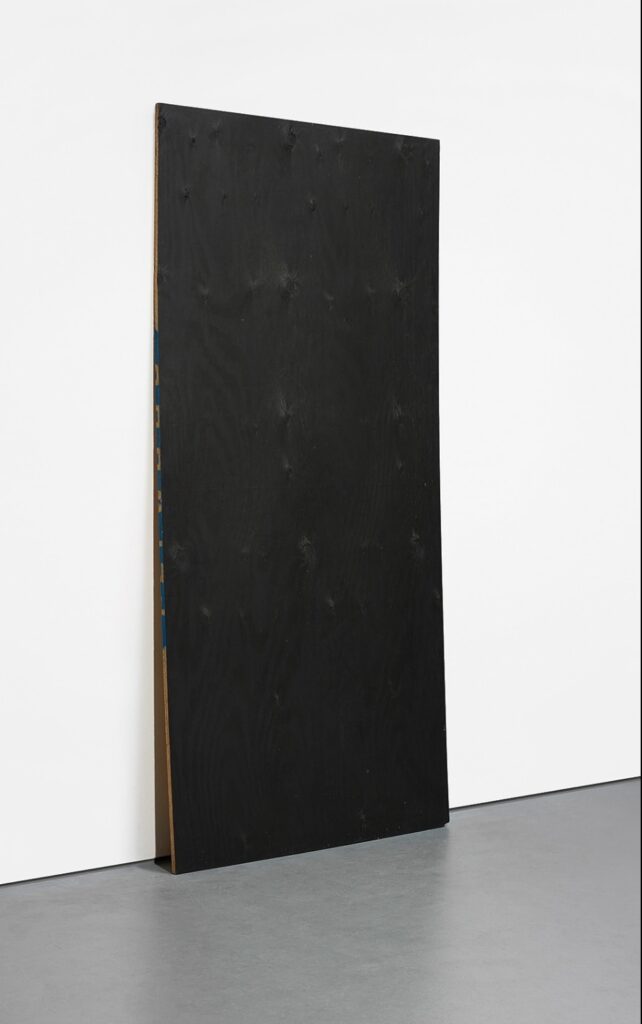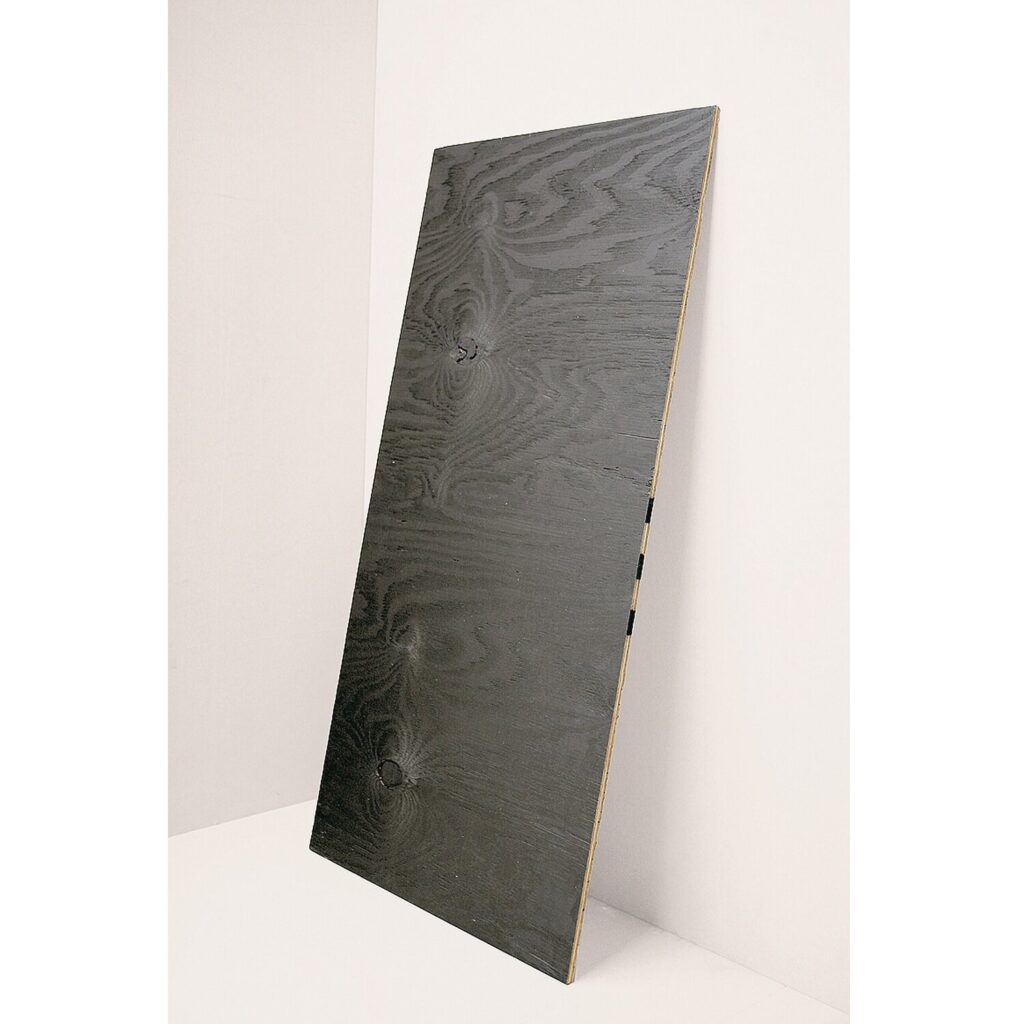
One of my favorite things to discover about Maria Lind’s 2012 Abstract Possible: The Stockholm Synergies show was the Wade Guyton narrative arc. And how Guyton’s massive, black painted plywood floor in the Konsthall raised the profile of the his black printed plywood edition in Lind’s controversial selling show at Bukowskis auction house. And how that very example did not sell then. And it did not sell in 2019. And it did not sell again in 2022.
And so the “Distinguished European Collector” who’s been stuck with it—I like to think it’s the Lundins—has had to keep enjoying what is truly, as far as these things go, an iconic work. How would it be?
Well, for a brief shining moment, now you can find out.

One reason I thought of for why this excellent example of Guyton’s work didn’t sell was the volume. Not just that it is an edition, but that there are actually two editions. When Guyton made this 8×4 ft plywood edition of seven in 2008, he also made a Parkett edition of 60 [38 numbered, XXII proofs].
But as I’ve noted before, what matters about the works of Guyton’s Black Paintings Era, which were all produced using the same monochromatic bigblack.tif file, is that they exist as a series. The editions, even more so. I’m getting shivers just imagining them being made all at once, 22 sheets of ply pumped into the inkjet printer, and admiring the the little differences.
Like being little. Though it elegantly maintains the proportion and scale of the ed. 7, Guyton’s untitled edition for Parkett 83 is a quarter of the size [4 x 2 ft., 15 sheets/4 = 60.]
Think what it’s like to move it around, perhaps in your car, or even in your pickup, or to store it, or to ship it. What the Parkett edition may lack in surface area, it more than makes up for in convenience.
And now, somehow, Parkett has one left, the “last available work from a previously sold-out edition.”
So you could wait a couple of years, and hope that Ed. 3/7 turns up again with another markdown—an uncertainty given the critical praise on Guyton’s recent productively incisive push forward through his past. Or you can take those ten thousand euros, and invest them right now, for which astuteness you will be rewarded with complimentary shipping.
